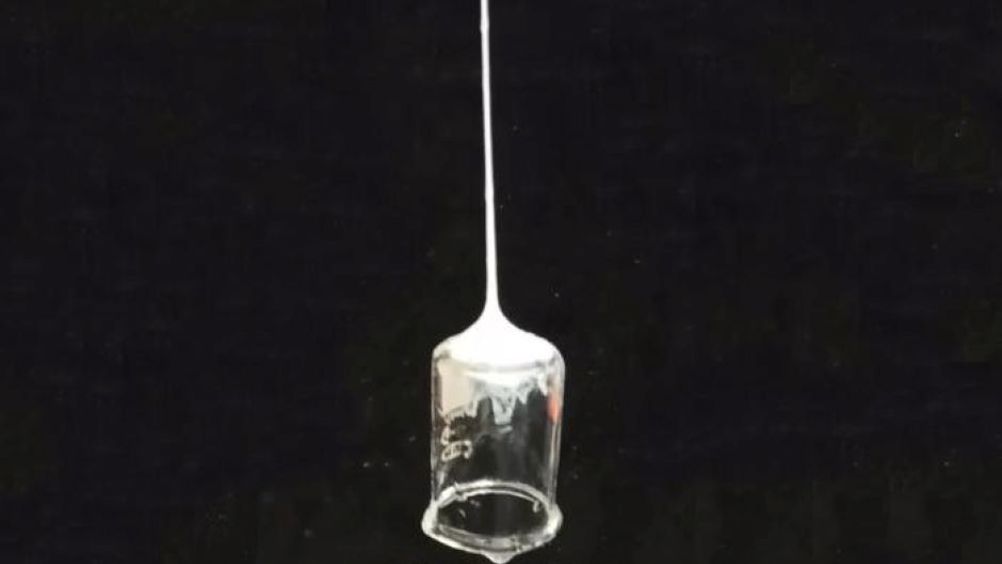Web-slinging device shoots fibres that can pick up objects
Researchers in the US have developed a silk solution that can be ejected from a needle, solidify as a string, and adhere to and lift objects.

Created at the Tufts University’s Silklab, the sticky fibres come from silk moth cocoons, which are boiled in solution and broken down into fibroin, which are their building block proteins. The team’s findings are detailed in Advanced Functional Materials.
The silk fibroin solution can be extruded through narrow bore needles to form a stream that solidifies into a fibre when exposed to air.
To date, Silklab has used silk fibroin to make glues that work underwater, printable sensors that can be applied to virtually any surface, edible coatings that can extend the shelf life of produce, a light-collecting material that could enhance the efficiency of solar cells, and more sustainable microchip manufacturing methods
Despite their progress with silk-based materials, the researchers had not been able to replicate the stiffness, elasticity, and adhesive properties of threads spun by spiders until a moment of serendipity.
“I was working on a project making extremely strong adhesives using silk fibroin, and while I was cleaning my glassware with acetone, I noticed a web-like material forming on the bottom of the glass,” Marco Lo Presti, a research assistant professor at Tufts, said in a statement.
Register now to continue reading
Thanks for visiting The Engineer. You’ve now reached your monthly limit of news stories. Register for free to unlock unlimited access to all of our news coverage, as well as premium content including opinion, in-depth features and special reports.
Benefits of registering
-
In-depth insights and coverage of key emerging trends
-
Unrestricted access to special reports throughout the year
-
Daily technology news delivered straight to your inbox










Water Sector Talent Exodus Could Cripple The Sector
Maybe if things are essential for the running of a country and we want to pay a fair price we should be running these utilities on a not for profit...